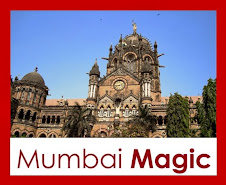It's a problem fairly common in schools, but we don't know how big it is. It has solutions, but we don't know how to implement them. All we've done so far, is sit by, and let children blunder on.
I'm talking about kids with difficulties in reading, writing and math.
No one really knows how many children in India have learning disabilities (LD), but it looks like a staggering 20 to 50 million might be affected. And still, there are very few schools that have any mechanisms in place to identify children with LD, or offer remedial therapy. The real tragedy is that LD children are not "stupid" - some of the brightest minds of our time, from Einstein to Edison to Pasteur, have had LD.
This Saturday, I went to an LD conference at the Hyatt, a gathering of educators, teachers, researchers and parents. The conference was hosted by Tata Interactive Systems, as part of their CSR initiative. As several speakers presented their thoughts and experiences, I learnt a lot about LD.

What I found most frustrating, though, was the realisation that the real problem is not with the kids. The real failure seems to be of school boards, administrators, and teachers. A survey of school teachers across CBSE, ICSE and SSC schools in Mumbai, conducted by the Bombay Teachers Training College, shows very low levels of real awareness amongst teachers ("Oh, I didn't realise, you mean like Taare Zameen Par?").
If those who are entrusted with teaching our children are themselves blind, then where do the rest of us go?
.
For the past 2 years, my mother has been tutoring a little girl from the slum nearby. Pranali has problems with the Marathi and the English alphabet. She's also bad with numbers and multiplication tables. But she's a very bright child, with twinkling eyes and winning ways, and can recite poetry and lessons beautifully. My mother's patience, her fair but firm handling, and her genuine love are making Pranali blossom.
.
The child loves coming to our house, loves to write her squiggles, and is almost tragic in her eagerness to please. If my mother moves away to another room, the girl follows her. "Mi ithe basu ka?", she asks......"Can I sit here (near you)?" It is like a flower finding the warmth of the sun and wanting to bask in it forever. It is the first time the child has found love and understanding, instead of strict balwadi teachers with frowning faces.
.
Last year, she passed her second standard exams, and has now moved to the third standard. To help with her third standard Marathi lessons, my mom enrolled for Marathi language classes nearby. I am amazed at my mother's dedication. "I promised Pranali's mother", my mom said. "So I'm going to do the best I can."
.
When I compare this with the thousands of other children subject to the tyranny of indifferent balwadi and municipal teachers, I'm telling you, it's enough to make me cry.
.
There are some small glimmers of hope. The B.Ed curriculum just got modified to include lessons on learning disabilities (finally!). At Sion Hospital, Dr. Kulkarni is doing some outstanding work in testing, diagnosis and remedial therapy (that's her in the photo below, a small grey haired lady with an iron will). Parents in Bombay are increasingly driving change at schools. Some schools already have counsellors and special needs educators, and more schools are waking up to the need. Last month, the school I went to, SIES, appointed a counsellor and is going to have a Special Needs Teacher from the next academic year.
.
There is progress, yes, but it is frustratingly slow. Several questions remain unanswered - for example, is there lower dyslexia in studying Indian languages than in English? Are Devnagri graphemes easier for those with dysgraphia? Does living in joint families, where there are different speech cadences, make a difference to infants? Does losing traditional lullabies result in increased LD? Do Indian girls have more LD, given the potentially lower attention in childhood? How early can we diagnose LD in India, and through what mechanism? Does improving balwadi nutrition programmes offer high rewards in improving performance of children with LD?
.
Many questions come rushing at me when I think of the social and cultural issues involved in something as complex and widespread as LD. Every one of these could make a significant research topic, if only the funds (and the academic will) were there! I am deeply grateful Tata Interactive is putting not just money, but also thoughtful and invovled effort behind this. More power to them.











 Very nice if you want a quiet sophisticated place for a couple of drinks after work. High ceilings, and tasteful decor. Cocktails were very decent, although my husband swears there was no alcohol in his Jack Daniels ("How come I'm still standing after so many rounds?!").
Very nice if you want a quiet sophisticated place for a couple of drinks after work. High ceilings, and tasteful decor. Cocktails were very decent, although my husband swears there was no alcohol in his Jack Daniels ("How come I'm still standing after so many rounds?!").











